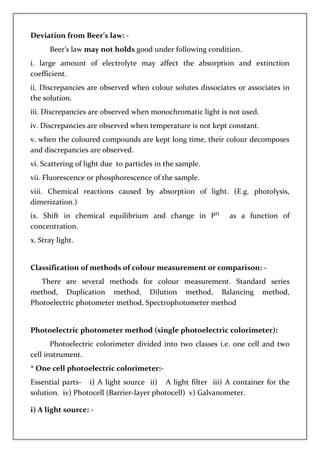1. Colorimetry uses the measurement of light absorption to determine the concentration of colored compounds in solution.
2. Lambert's law and Beer's law describe the relationship between light absorption and characteristics of the absorbing medium like concentration and path length.
3. Beer's law states that absorbance remains constant when concentration and path length are changed in inverse proportion, allowing for determination of unknown concentrations.







